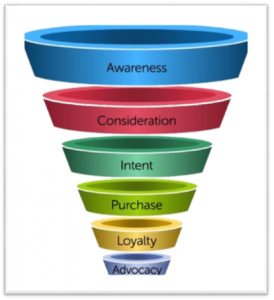61% of employees admit to feeling burnout at work, and 31% of employees are facing extreme stress levels caused by the workplace, according to a report released by Forbes. Employees who experience burnout at their jobs will become less productive, unhappy, and suffer from health complications.
Small businesses must identify when employees are experiencing workplace burnout and provide the resources necessary to prevent it. Having a work environment that leads to stress, unhappiness, and nonproductive employees can harm the company’s reputation, turnover rate, and morale.
Let’s dive deeper into how businesses can prevent employee burnout in the modern workplace.
5 Ways to Prevent Employee Burnout and Provide a Healthy Work Environment
There are many approaches for small business owners and managers to incorporate improvements into the workplace. Though you may have to experiment with the success rate for your organization, the following five tips will be a great starting point.
Create an upbeat tone and offer healthy snacks
As a leader, it’s essential to set a positive tone at work. Your positive energy will be contagious and rub off on employees. Optimistically communicate with your team and do the best you can to motivate employees. Staying upbeat will keep your team in good spirits.
Modern employers tend to offer healthy snacks and beverages for employees to access when they need an extra boost. Allowing employees to grab a snack also improves overall health. HSI reports healthy snacking between meals controls blood sugar levels, improves brain energy, and enhances focus.
Provide positive feedback for quality work performed
It’s vital to recognize hard-working employees. Communicating how well an employee performs will go a long way and allows employees to feel accomplished. Sharing these details can be done by sending an email, having a face-to-face conversation, or scheduling a team meeting to provide recognition are considered great alternatives to convey a job well done. When employees feel like they have met the company’s expectations, they are more likely to continue their hard work and productivity.
Facilitate a work-from-home option
If your company has the resources to do so, facilitate a work from home option. Employees may feel burnt out from experiencing a repetitive schedule day after day. Remote work has become increasingly popular with excellent productivity levels. A statistic from Apollo Technical shows employees who work from home are 47% more productive.
Offer vacation time or PTO for employees
It’s crucial to have a paid time off policy to calculate PTO and accrual rates accurately. Having employees use PTO for vacations, personal time, and sick days will help. Employees will feel comfortable knowing they don’t need to stress if something unexpected takes time away from work. Additionally, employees should be encouraged to take time off from work to prevent burnout and promote relaxation.
According to SHRM’s Vacation’s Impact on the Workplace report, employees who take most or all of their vacation time each year are more productive, more satisfied with their jobs, and perform at higher levels than those who do not use vacation time.
Use time tracking tools to prevent overworking
We’ve all been guilty of losing track of time, especially when we are focused on a work-related project or task. Incorporating a time tracking system is a great solution to track employee hours worked and prevent employees from experiencing burnout in the workplace.
Employees may be working more than they think and causing them to have decreased energy, lack of motivation, and feeling overwhelmed. Understanding the status of how many hours have been worked during the week and how much time needs to be worked further will allow employers and employees to schedule their work accordingly. More work does not always equate to more productivity.
Why a Burnout-Free and Healthy Work Environment is Important
Burnout can lead to severe effects on employees. From fatigue, lousy decision-making to high stress and anxiety levels, these can result from experiencing chronic burnout. Excessive work-related stress is the underlying cause of 120,000 deaths in the U.S. annually. Management should be mindful of the health consequences employees may face from high stress brought on by workplace burnout.
A burnout-free work environment is not only great for employees but also improves a company as a whole. Establishing the strategies previously discussed will drastically enhance company culture, such as:
- Increased employee retention
- Qualified candidates expressing interest to be part of the team
- Improved teamwork, collaboration, and communication
- Better brand recognition
- Higher end-product quality
Pay Attention and Listen to Employees
Looking for employee burnout and listening to your team’s input is one of the most critical elements when preventing burnout. Don’t hesitate to check in with your team members to see how they feel and how your organization can improve.
Listen to recommendations employees may have that will help them and the company. Create a document to share so everyone can contribute their thoughts and ideas. It’s also a good idea to hold scheduled meetings to discuss the feedback provided on the document and understand how you can grow your company by preventing employee burnout.
Implement Ideas and Make Adjustments as Needed
It’s one thing to listen to your employees’ ideas, but it’s another actually to act on them. The longer you wait to eliminate employee burnout, the harder it may be to rebound from the effects. Create a plan that helps employees stay motivated, look forward to coming to work, and stay relaxed. Do not be afraid to try new things and make the appropriate changes if results aren’t made.
Business & Finance Articles on Business 2 Community
(41)






